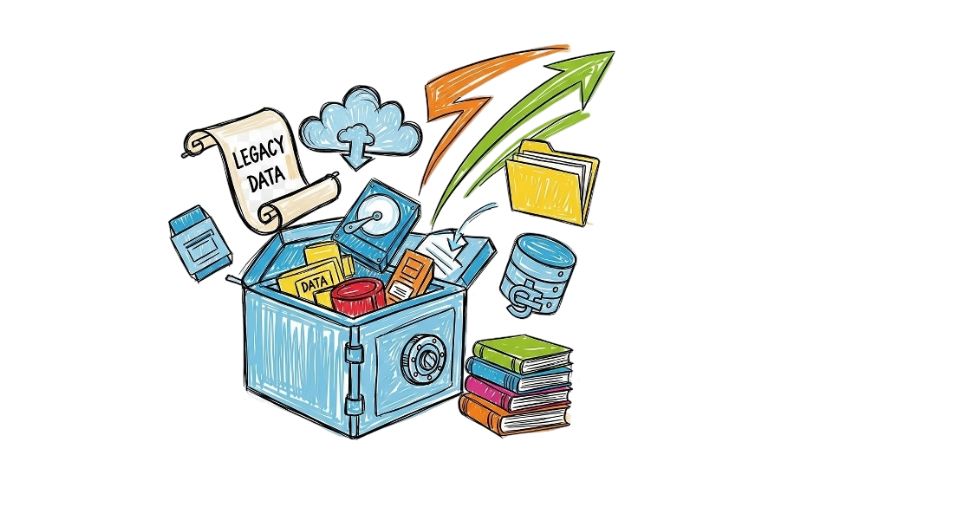
Sep 04, 2025

A new story on the global enterprise data archiving market emerges in the form of a new report launched by Metastat Insight, one that provides a glaring perspective cobbled together through thorough research and honed. an extended commentary is developed that transcends common viewpoints. Drawing attention to subtleties that indicate changes in obligations, custodial practices, and archival strategies, this introduction sets the stage for a holistic understanding of how organizations are adjusting data retention strategies under the pressures of regulatory requirements, corporate governance, and long-term accessibility needs.
Inside corporate hallways, an unprecedented focus shifts towards incorporating older datasets without compromising performance or ballooning storage loads. A new approach couples selective compression methods with deduplication mechanisms, producing systems that retain vital information while maximizing storage density. High fidelity metadata indexing technologies revitalize stored content, enhancing retrieval flow and context relevance. Low overhead, transparent deployment, and smooth integration with live systems define this reorganized orchestration, permitting continuity and non-disruptive assimilation into the archives.
Testing paradigms based on emulating historical data access patterns redefine what is understood about hot bits and deep storage. Retrieval patterns identifying repeated request patterns inform adaptive caching levels to speed access without dropping to primary storage platforms. Caching orchestration under metadata rather than fixed polling appears as a welcome enhancement, progressing beyond static polling to behaviour-driven prediction-based prioritization. New archiving protocols provide encrypted indexing and security retrieval channels to protect both sleeping and accessed archives in transit and at rest. Such cryptographic stiffness is complemented by multi-layered access controls to make a secure yet responsive archival environment.
Stakeholders now need to answer increased scrutiny for long-term data sovereignty and jurisdictional domicile. Solutions built for divided data residency facilitate policy compliance by dividing archives into various geographic regions with unified access layers. Policy enforcement is kept transparent deep inside archival engines, revising retention and deletion policies automatically based on regulatory changes. These operations are performed in the background, interactive but not visible, making compliance smoother on multi-faceted legislative networks.
Integration with artificial intelligence upgrades has started redefining the archival infrastructure. Classification engines scan unstructured information and sort it based on changing taxonomies resulting from machine learning. This classification not only simplifies retrieval but also assists in regulatory categorization and preparation for audit. Semantic tagging overlays, based on natural language understanding, provide intuitive search functionality, connecting archived pieces by relevance of concepts instead of merely literal keyword connections. This semantic search overlay speeds discovery of precedent cases, compliance artifacts, or customer correspondences hidden in legacy storage.
In addition to search efficacy, AI-enhanced predictive archiving engineers look ahead to anticipate data explosion and compliance changes. Dynamically adjusting archival thresholds cause data to move into lower archival tiers when activity wanes. Adaptive archival thresholds enabled by machine learning models help prevent storage overprovisioning while allowing for timely availability of actionable data. This equilibrium promotes resource optimization and operational responsiveness through intelligent, adaptive pipelines. Auto-tiering drivers tune storage tiers without human intervention, balancing performance and cost control.
High resilience is realized through new-generation redundancy strategies. Distributed archival pieces across micro-sites withstand site-level disruption, integrity verification algorithms reconstituting potential corruption by way of parity pieces. Data archival continuity is maintained in the face of hardware failure, network disruption, or site-level outage. Verification procedures regularly checksum archived pieces, indicating integrity drift before restoration is required. This coordination of distributed resilience and self-healing capabilities facilitates trust in long-term preservation of data, protecting archived material from hidden degradation or unexpected disruption.
Interoperability is another area of emphasis, facilitating hassle-free data migration across archival platforms without vendor lock-in. Open formats and conversion toolkits give stakeholders the ability to modify archival backends in harmony with changing infrastructure strategies. Portable archival bundles provide cross-platform portability, allowing migration to cloud or hybrid infrastructures without reprocessing archived material. This agility facilitates strategic realignment, either moving toward cloud-first models or adopting multi-cloud diversification, all while avoiding archival friction from stifling transformation initiatives.
Sustainability arises from prudent energy consumption protocols integrated into archival infrastructure. Cold storage media evolves into ultra-efficient drives during off-peak periods, reducing energy consumption and carbon footprints. Archival clusters switch into low-power standby modes when access levels fall to trivial levels, automatically resuming on audit analysis or legal discovery requests. This energy-conscious orchestration synchronizes preservation requirements with ecologically friendly duty, promoting eco-responsible operational stories.
User empowerment is enhanced by self-service archive portals that support filtered retrieval and redaction processes. Authorized users safely access encrypted archives, initiating retrieval requests or disposition orders through easy-to-use interfaces. A level of automation guarantees manageability for oversight, allowing controlled disclosure while avoiding accidental data spills. Archived record export, optimized by policy-aware extraction engines, enables compliance teams to create audit-ready materials in addition to legal teams needing expedited information disclosure.
Training modules augment the archival systems, incorporating automated guidance and compliance checks. Operators are prompted with contextual cues when accessing sensitive content, minimizing the risk of human error upon retrieval or retention policy modification. Compliance assistants also watch over operator activity, alerting upon divergence from retention requirements. Embedded protection mechanisms minimize risk and enhance procedural conformance at various operating levels.
Overall, this evolved understanding of the global enterprise data archiving market via the new presentation by Metastat Insight moves from shallow analysis into a description of revolutionary processes redefining archival intelligence, automation compliance, energy efficiency, resilience weave, and user-focused accessibility. Through interweaving developments in adaptive storage, predictive removal, cryptographic recovery, semantic discovery, regulatory harmonization, sustainability, and modular interoperability, the story shows archival infrastructure transforming into a smart, agile backbone that underpins current corporate and legal requirements.
A closing view does justice to this comprehensive breakdown of worldwide enterprise data archiving market trends distilled in an updated presentation by Metastat Insight framed in clear terms that are not prone to repetition and value clarity, affirming the way such systems are moving from inactive vaults to strategic facilitators of information continuity, regulatory transparency, and organizational flexibility.
Drop us an email at:
Call us on:
+1 214 613 5758
+91 73850 57479